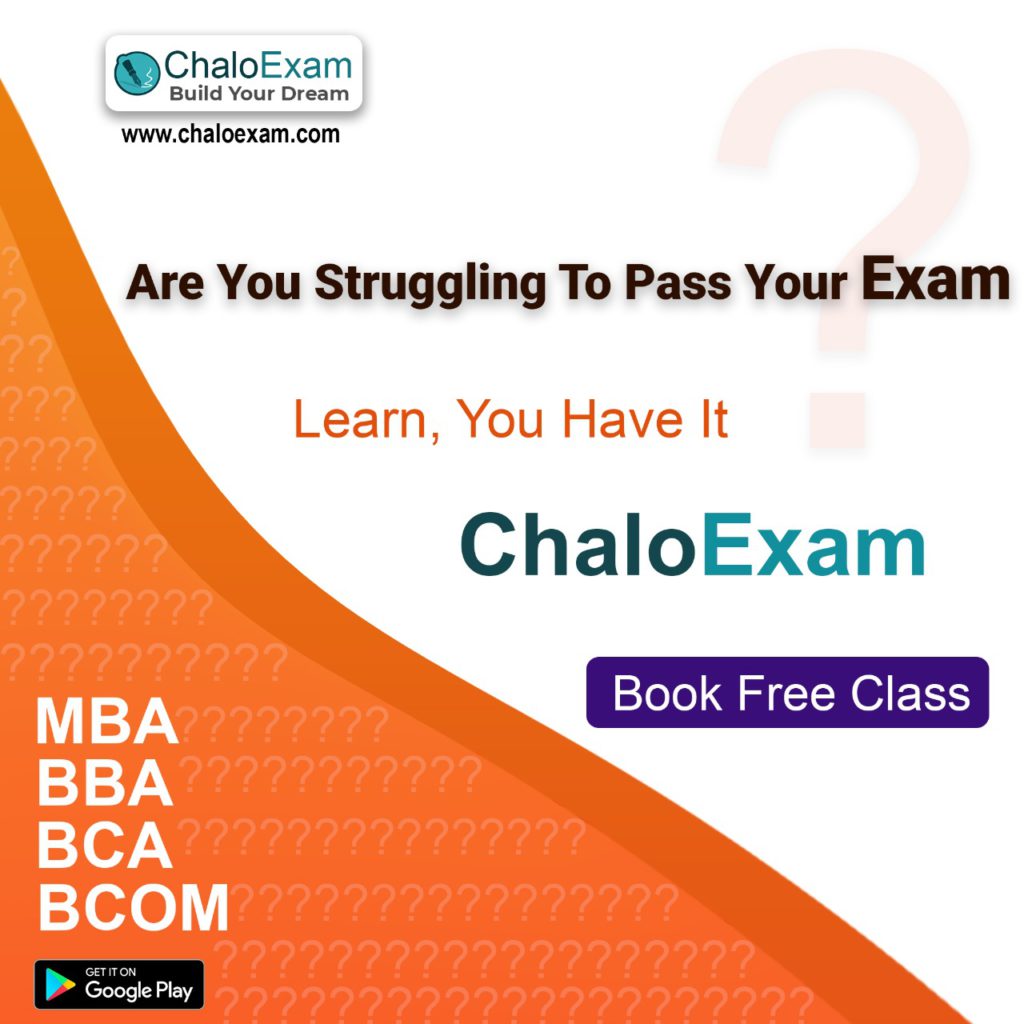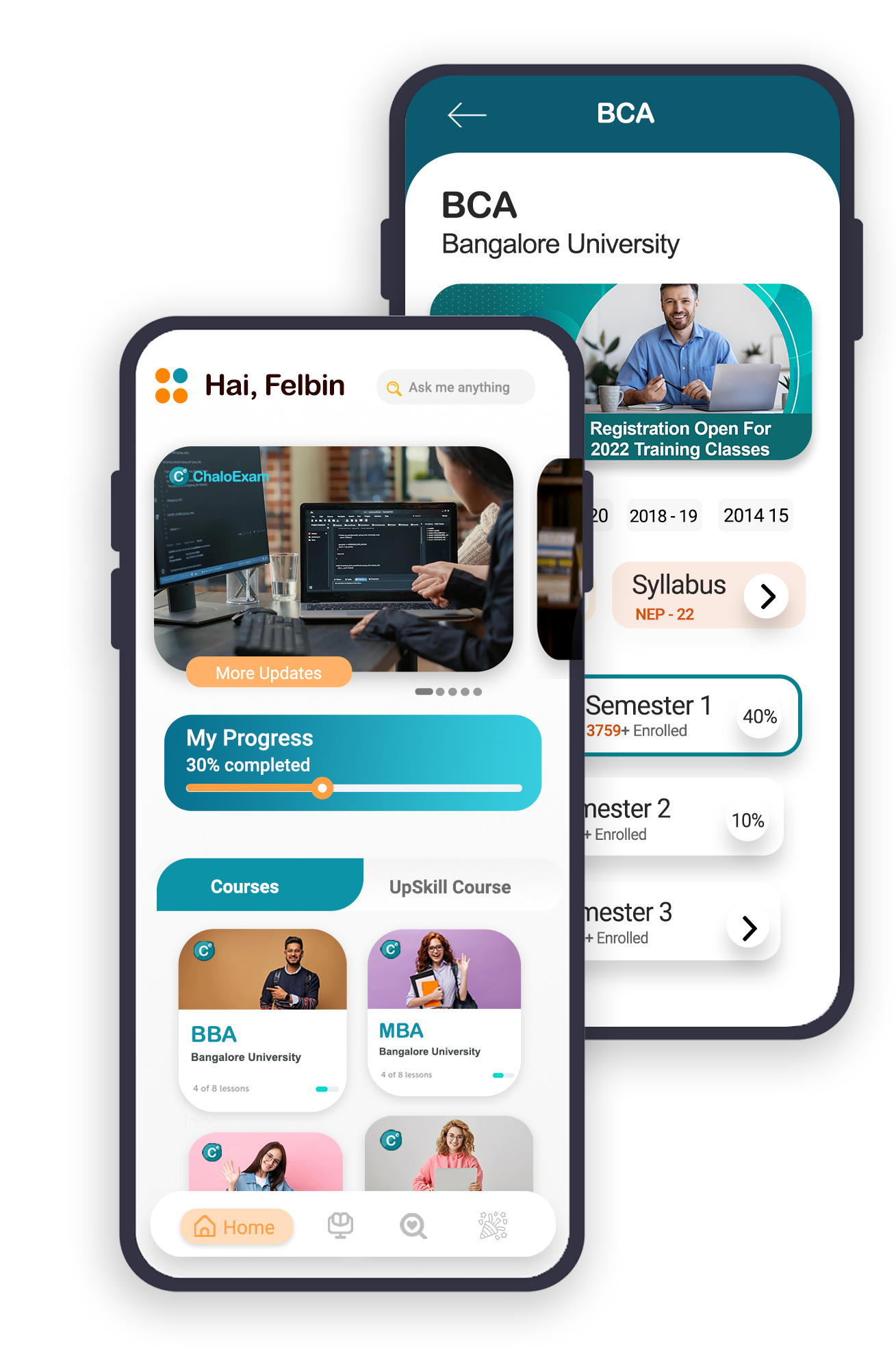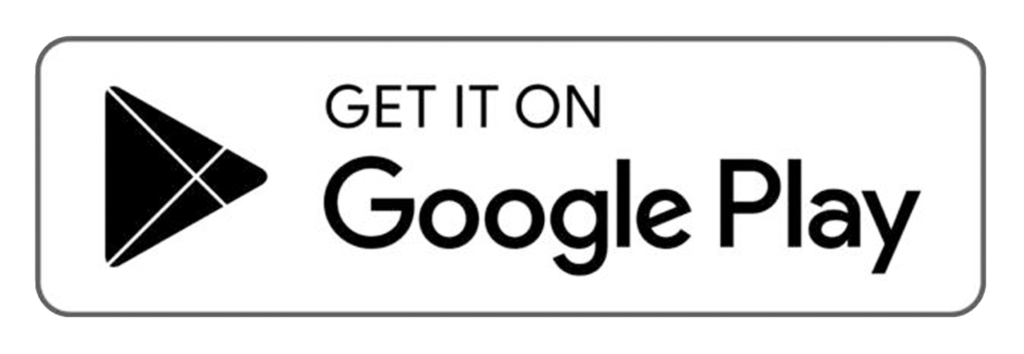Book Free Classes
Bangalore Central University 6th sem MBA Study Materials (New Syllabus)
Download free BBA 6th sem module wise notes, latest solved question papers, previous 5 years question paper till 2021, model question papers, easy notes, exam-oriented notes are available on this website chaloexam.com of Bangalore Central Universit
Bangalore Central Universit BBA syllabus 2021
Syllabus
6.1 INCOME TAX - II
OBJECTIVE:
∙ To make students understand the computation of Taxable Income and Tax Liability of individuals.
UNIT 1: PROFITS AND GAINS FROM BUSINESS AND PROFESSION 16 Hrs. Meaning and Definition of Business, Profession – Vocation - Expenses Expressly Allowed – Allowable Losses – Expenses Expressly Disallowed – Expenses Allowed on Payment Basis - Problems on Business relating to Sole Trader and Problems on Profession relating to Chartered Accountant, Advocate and Medical Practitioner.
UNIT 2: CAPITAL GAINS 15 Hrs. Basis of Charge – Capital Assets – Transfer of Capital Assets – Computation of Capital Gains – Exemptions U/S 54, 54B, 54D, 54EC, 54F– Problems on Capital Gains.
UNIT 3: INCOME FROM OTHER SOURCES 08 Hrs. Incomes – Taxable under the head Other Sources – Securities – Kinds of Securities – Rules for Grossing Up – Ex-Interest Securities – Cum-Interest Securities – Bond Washing Transactions – Problems on Income from Other Sources.
UNIT 4: DEDUCTIONS FROM GROSS TOTAL INCOME 06 Hrs. Deductions u/s: 80 C, 80 CCC, 80 CCD, 80 D, 80 DD, 80 E, 80 G, 80 GG, 80 GGA, 80 QQB, 80 U. (Theory Only)
UNIT 5: SET-OFF & CARRY FORWARD OF LOSSES AND ASSESSMENT OF INDIVIDUALS 10 Hrs.
Meaning –Provision for Set-off & Carry forward of losses (Theory only)
Computation of Total Income and Tax Liability of an Individual Assessee (Problems – in case of Income from Salary & House Property - Computed Income may be given).
SKILL DEVELOPMENT:
∙ Table of rates of Tax deducted at source.
∙ Filing of IT returns of individuals.
∙ List of Enclosures for IT returns.
BOOKS FOR REFERENCE
- Dr. Vinod K. Singhania: Direct Taxes – Law and Practice, Taxmann publication. 2. B.B. Lal: Direct Taxes, Konark Publisher (P) ltd.
- Dr. Mehrotra and Dr. Goyal: Direct Taxes – Law and Practice, Sahitya Bhavan Publication. 4. Dinakar Pagare: Law and Practice of Income Tax, Sultan Chand and sons.
- Gaur & Narang: Income Tax.
- 7 Lecturers – Income Tax – I, VBH
- Dr.V.Rajesh Kumar and Dr.R.K.Sreekantha: Income Tax – I, Vittam Publications. 8. Dr. B Mariyappa, Income Tax II – HPH.
6.2 STRATEGIC MANAGEMENT
OBJECTIVE:
∙ To enable the students to understand the various strategic issues such as Strategic Planning, Implementation and Evaluation.
UNIT 1: INTRODUCTION TO STRATEGIC MANAGEMENT 10 Hrs. Introduction - Meaning and Definition – Need – Process of Strategic Management – Strategic Decision Making – Business Ethics – Strategic Management.
UNIT 2: ENVIRONMENTAL APPRAISAL 12 Hrs. The concept of Environment – The Company and its Environment – Scanning the Environment, Technological, Social, Cultural, Demographic, Political, Legal and Other Environments Forces. SWOT Analysis – Competitive Advantage – Value Chain Analysis.
UNIT 3: STRATEGIC PLANNING 12 Hrs. Strategic Planning Process – Strategic Plans during recession, recovery, boom and depression – Stability Strategy – Expansion Strategy – Merger Strategy – Retrenchment Strategy – Restructure Strategy – Levels of Strategy – Corporate Level Strategy – Business Level Strategy and Functional Level Strategy – Competitive Analysis – Porter’s Five Forces Model.
UNIT 4: IMPLEMENTATION OF STRATEGY 14 Hrs. Aspects of Strategy Implementation – Project Manipulation – Procedural Implementation – Structural Implementation – Structural Considerations –Organizational Design and Change – Organizational Systems. Behavioral Implementation – Leadership Implementation – Corporate Culture – Corporate Policies and Use of Power. Functional and Operational Implementation – Functional Strategies – Functional Plans and Policies. Financial – Marketing – OPERATIONAL and Personnel dimensions of Functional Plan and Policies – Integration of Functional Plans and Policies.
UNIT 5: STRATEGY EVALUATION 07 Hrs. Strategy Evaluation and Control - Operational Control - Overview of Management Control – Focus on Key Result Areas.
SKILL DEVELOPMENT:
∙ Present a chart showing Strategic Management Process.
∙ Select any organization and undertake SWOT analysis.
∙ Analyse the corporate, business and functional level strategies of any one Indian Company.. ∙ Select any sector and make competitive analysis using Porter’s five forces model. ∙ List social responsibility actions initiated by any one company in India.
∙ Select any organization and identify the Key Result Areas
BOOKS FOR REFERENCE
- Dr. Aswathappa, Business Environment for Strategic Management, Tata McGraw Hill. 2. Subbarao: Business Policy and Strategic Management, HPH.
- Charles W.L Hill and Gareth R. Jones, Strategic Management an Integrated Approach, Cengage 4. Learning
- Azhar Kazmi, Business Policy and Strategic Management, Tata McGraw Hill 6. AppaRao; Strategic Management and Business Policy, Excel Books.
- Ghosh P.K., Business Policy and Strategic Planning and Management, Tata McGraw Hill. 8. Pillai, Strategic Management,
- Lawerence, Business Policy and Strategic Management, Tata McGraw Hill.
- Sathyashekar : Business Policy and Strategic Management, I.K International Publishing House Pvt.Ltd
6.3 INTERNATIONAL BUSINESS
OBJECTIVE:
∙ To facilitate the students in understanding Globalization and International Business Management
UNIT 1: INTRODUCTION TO INTERNATIONAL BUSINESS 14 Hrs. Meaning and Definition of International Business – need & importance of International Business, stages of internationalization, Theories of International Trade – Mercantilism, Absolute Cost Advantage, Comparative Cost Theory, Huckster – Ohlin Theorem, EPRG Framework, Tariff and non-tariff and barriers of International Business.
UNIT 2: MODES OF ENTERING INTERNATIONAL BUSINESS 08 Hrs. Mode of Entry – Exporting (direct and indirect) – Licensing – Franchising – Contract Manufacturing – Turn Key Projects – Foreign Direct Investment – Mergers, Acquisitions and Joint Ventures – Comparison of different modes of Entry. Entry Strategies for BRICS Economies
UNIT 3: GLOBALIZATION 15 Hrs. Meaning - Features – Stages, Advantages and Disadvantages – Methods and Essential Conditions for Globalization. Merits and Demerits of globalization in India. Introduction to Political, Economic, Social Cultural & technological environment of international business. GATT and WTO. OECD Guidelines for Multinational Enterprises
UNIT 4: INTERNATIONAL MARKETING INTELLIGENCE 08 Hrs. Information required Sources of information-ITPO, CII Chambers of commerce, state trading corporations and Export promotion councils, International Trade Centre, International marketing information System, International Marketing Research.
UNIT 5: INTERNATIONAL FINANCE AND DOCUMENTATION 10 Hrs. Export credits, Method and sources of credit, Methods of payments in International Business, Financing techniques. ECGC, DGFT, IIFT, RBI, EXIM Bank, ECGC & EPCs and their role. Forex market, IMF Disequilibrium of the balance of payments and rectification (Concept only). Export Trade, Procedure, Steps & Documentation
SKILL DEVELOPMENT
∙ Tabulate the foreign exchange rate of rupee for dollar and euro currencies for 1 month ∙ List any two Indian MNC’s along with their products or services offered.
∙ Prepare a chart showing currencies of different countries
∙ Collect and Paste any two documents used in Import and Export trade.
BOOKS FOR REFERENCE
- Rakesh Mohan Joshi. (2011). International Business, Oxford University Press, New Delhi. 2. Francis Cherunilam; International Business, Prentice Hall of India
- P. SubbaRao – International Business – HPH
- Sumati Varma. (2013). International Business (1st edi), Pearson.
- Charles Hill. (2011). International Business: Text & Cases, Tata McGraw Hill, New Delhi. 6. International Business by Daniel and Radebaugh –Pearson Education- 10th Edition
6.4 INFORMATION TECHNOLOGY FOR BUSINESS – II
OBJECTIVES:
∙ To familiarize with the aspect of Internet, Email, Search Engine
∙ To provide an analytical and technical framework to understand the emerging world of E commerce.
∙ To develop skills in E marketing Techniques.
∙ To familiarize with the aspect of Online Social Networks.
UNIT 1: INTERNET AS A NETWORK INFRASTRUCTURE 12 Hrs. Internet-Technology Background, The Internet Today, The Future Infrastructure, The Intranet-Definition, Application of Intranet, Industry Specific Solutions, The Extranet - Definition, Application of Intranet, Industry Specific Solutions, Introduction to Email, Common Email Features, Google and its features(Google Drive, Google Docs, Google Forms, Google Sheets, Google Hangouts)
UNIT 2: INTRODUCTION TO ECOMMERCE 12 Hrs. Introduction to E Commerce Framework for E Commerce, Difference Between E Commerce and M Commerce, Features of E Commerce, Types of E Commerce, Types of B2C Business Models, B2B Business Models, E Business Revenue Models.
UNIT 3: ELECTRONIC PAYMENT SYSTEMS 12 Hrs. Introduction to Electronic Payment Systems, Process & Phases of Electronic payment systems, Benefits of Electronic Payment Systems, Risk Involved in Electronic Payment Systems, Types of B2C Electronic Payment Systems- Credit Card, Debit Card, E Cash, E Wallet, Smart Card, E Banking, E Check.
UNIT 4: E MARKETING AND ADVERTISING 10 Hrs. Advertising and Marketing on the Internet, B2C and B2B Marketing Strategies, Permission marketing, Affiliate marketing, Viral Marketing, Blog marketing, Email Marketing, Social Media Marketing, Search Engine marketing. Customer Relationship Management system, Customer Retention: Strengthening the Customer Relationship, Personalization and One-to-One Marketing, Customization and Customer Co Production, Transactive Content, Customer Service.
UNIT 5: SOCIAL NETWORKS AND ONLINE COMMUNITIES 10 Hrs. What Is an Online Social Network? The Difference Between Social Networks and Portals, The Growth of Social Networks and Online Communities, Turning Social Networks into Businesses, Types of Social Networks and Their Business Models, Social Network Features and Technologies, The Future of Social Networks.
SKILL DEVELOPMENT:
∙ Creating Email Account and Sending Email with file Attachment
∙ Create Google Forms
∙ Create Google Sheets
∙ Create Google Docs
∙ Different types of E marketing techniques
BOOKS FOR REFERENCE:
- Dr. B Mariyappa – E- Business and Accounting – HPH.
- R. G. Saha, E-Business, HPH
- Kalakota Ravi and A. B. Whinston : “Frontiers of Electronic Commerce”, Addison 4. Watson R T :“Electronic Commerce – the strategic perspective.” The Dryden press 5. Agarwala K.N and Deeksha Ararwala: “Business on the Net – Whats and Hows of E-Commerce” 6. Murthy CSV: “E. Commerce” Himalaya Publishing House Pvt.Ltd.
- P. Diwan, S. Sharma; “E-Commerce”, Excel Books.
- JanalD.S :“Online Marketing Hand book.” Van Nostrand Reinhold Network 9. Kosiur David, “Understanding Electronic Commerce Microsoft”, press Washing-ton. 10. Minoli and Minol, “Web Commerce Technology Handbook”, TMH New Delhi. 11. Schneider Gary P, “Electronic Commerce- course Technology, Delhi.
- Young Margaret Levine: “The complete reference to Internet”, TMH.
- C.S.Rayudu: “Ecommerce and E Business”, HPH.
- Kalakota Ravi: “E-business 2: Road map for success.” Pearson Education Ltd. 15. Mariammal & Soundra Rajan, E-business, SHB.
References:
o Google Apps Express: The Fast Way to Start Working in the Cloud by James Beswick o Google In Your Classroom: A Guide to Google Apps and Chromebook for Teachers by Scott La Counte
o Google Apps Made Easy: Learn to work in the cloud (Computers Made Easy) by James Bernstein
FN 6.5 RISK MANAGEMENT AND DERIVATIVES
OBJECTIVES:
∙ To make the students to understand the various risks associated with business. ∙ To provide knowledge on risk measurement and evaluation in making capital budgeting decisions. ∙ To provide knowledge on risks associated with investments outside the business and strategies for hedging the same with derivatives.
UNIT 1: RISK – MEANING, TYPES. RISK ANALYSIS IN CAPITAL BUDGETING 14 Hrs. Meaning of Risk. Types of Risks of a Business Enterprise. Risk Analysis in Capital Budgeting – Measuring and Managing Capital Budgeting Risks – Sensitivity Analysis, Scenario Analysis, Simulation, Standard Deviation and Co-efficient of Variation, Risk-Adjusted Discount Rate Method, Certainty Equivalent Co efficient Method, Decision Tree Analysis and Probability Distribution Method.
UNIT 2: INVESTMENT RISKS AND DERIVATIVES 08 Hrs. Meaning of Derivatives. Types of Derivatives. – Forward Agreements, Future Contracts – Terms associated with Futures – Stock Futures and Index Futures, Differences between Forwards and Futures, Margin and Settlement Mechanism of Futures.
UNIT 3: FUTURE CONTRACTS – HEDGING AND TRADING 10 Hrs. Hedging with Futures – Stock Hedging: When there is a future contract available on the stock and when there is no future contract available on the stock. Portfolio Hedging: Adjusting Portfolio Risk. Pricing of Futures.
UNIT 4: OPTIONS – BASICS AND STRATEGIES 12 Hrs. Option Contracts – Meaning, Types – Call, Put, American, European. Pay-off and Pay-off Diagrams. Hedging Strategies – Protective Put Strategy and Covered Call Strategy. Trading Strategies with Options – Straddle, Strip, Strap, Strangle, Spreads.
UNIT 5: OPTION PRICING 12 Hrs. Put-Call Parity Theory, Portfolio Replication Method, Risk Neutralization Method, Binomial Method and Black-Scholes Method. Option Greeks.
SKILL DEVELOPMENT:
∙ Perform a simulation analysis on Excel for an imaginary data of Cash Outflows and Cash Inflows. ∙ Demonstrate Stock Hedging with Futures with the data elicited from National Stock Exchange. ∙ Demonstrate the effect of Straddle and Strangle for an underlying of your choice. ∙ List out three months future prices of 10 stocks/commodities
BOOKS FOR REFERENCE:
- V. Rajesh Kumar, “Strategic Financial Management”, Mc Graw Hill Publishers. 2. Damodaran, Aswath, “Corporate Finance”, John Wiley & Sons Inc.
- Damodaran Aswath, “Appliced Corporate Finance”, John Wiley & Sons Inc. 4. Chandra, Prasanna, “Financial Management – Theory and Practice”, Tata McGraw-Hill Publishing Company Limited.
- Pandey, I M, “Financial Management”, Vikas Publications.
- Khan, M.Y., and Jain, P.K., “Financial Management – Text, Problems and Cases”, Tata McGraw Hill Publishing Company Limited.
- Chance/Brooks, An Introduction to Derivatives & Risk Management, Thomson. 8. Hull J, Options, Futures and Other Derivatives, 6 ed., Prentice Hall.
- Dubosky and Miller, “Derivatives – Valuation and Risk Management”, Oxford University Press. 10. Kumar, SSS, “Financial Derivatives”, Prentice Hall of India.
- Parasuraman, N.R; “Fundamentals of Financial Derivatives”, Wiley India.
- Vohra, and Bagri, “Futures and Options”, Tata Mc Graw Hill.
FN 6.6 INTERNATIONAL FINANCE
OBJECTIVES:
∙ To orient the students on global business environment and international markets. ∙ To make students understand the various risks an enterprise is exposed to on account of international transactions.
∙ To provide knowledge and skills for hedging foreign currency risks.
UNIT 1: GLOBAL FINANCIAL ENVIRONMENT 06 Hrs. Evolution of International Monetary System, Bimetallism, Classical Gold Standard, Interwar Period, Bretton Woods System, Flexible Exchange Rate Regime, the current Exchange Rate Agreements, European Monetary System, Fixed vs. Flexible Exchange Rate Regime.
UNIT 2: INTERNATIONAL FINANCIAL DECISIONS 14 Hrs. International Capital Budgeting – Influence of Inflation on Capital Budgeting Decisions; Evaluation of Foreign Projects: Home Currency Approach and Foreign Currency Approach, International Financing Decisions – Source of Finance – ADRs, GDRS, ECBs, FCCBs, Masala Bonds; International Working Capital Management – Netting, Leads and Lags.
UNIT 3: EXCHANGE RATE DETERMINATION 06 Hrs. Purchasing Power Parity Theory, Interest Rate Parity Theory, International Fischer’s Effect and Pure Expectations Theory.
UNIT 5: FOREIGN EXCHANGE RISK AND RISK HEDGING STRATEGIES 18 Hrs. Transaction Risk, Translation Risk, Economic Risk. Risk Hedging Strategies: Internal – Netting, Leads and Lags. External – Forwards, Futures, Options, Money-market Hedging, Currency Swaps.
UNIT 6: INTEREST RATE RISK AND RISK HEDGING STRATEGIES 12 Hrs. Interest Rate Swaps, Forward Rate Agreements, Interest Rate Futures, Interest Rate Options, Caps, Floors and Collars, Swaption.
SKILL DEVELOPMENT:
∙ List the currencies of different countries and their conversion value into INR. ∙ List the Indian companies which have issued ADRs, GDRs and International Bonds. ∙ Demonstrate hedging foreign currency risk with data taken from Stock or Commodity Exchanges. ∙ Demonstrate Interest rate swapping of two companies with transaction risk.
BOOK FOR REFERENCE:
- V. Rajesh Kumar, “Strategic Financial Management”, Mc Graw Hill Publishers. 2. Madura, Jeff, “International Corporate Finance”, Thomson South-Western.
- Sharan, Vyuptakesh, “International Financial Management”, Prentice Hall of India. 4. Jain, Peyrard, and Yadav’ “International Financial Management”, MacMillan 5. J. Fred Weston, Bart: Guide to International Financial Management.
- Robery O. Edmister: Financial Institutions - markets and Management.
- A.V. Rajwade: Foreign Exchange International Finance and Risk Management, Prentice Hall.
MK 6.5 DIGITAL MARKETING
OBJECTIVE:
∙ To facilitate the ability to identify the importance of digital marketing for marketing success and to manage customer relationships across all digital channels and to create a digital marketing plan.
UNIT 1: INTRODUCTION TO DIGITAL MARKETING 08 Hrs. Meaning of Digital Marketing-its importance. Digital Marketing platforms, Changing trends in Digital Marketing era.
UNIT 2: SEARCH ENGINE OPTIMIZATION (SEO) 12 Hrs. Meaning of SEO. Trends in SEO Different kinds of traffic on and off Page Optimization (OPO)-Linking Strategies, Competitor Analysis.
UNIT 3: SEARCH ENGINE MARKETING (SEM) 10 Hrs. Introduction to SEMSEM platforms – paid platforms, Introduction to Google Ad-Words Campaign creation process, Demographic Targeting.
UNIT 4: CONVERSIONS 08 Hrs. Types of Conversions, Conversion Tracking, Optimizing Conversions, Track Offline Conversions, Analyzing Conversion data.
UNIT 5: SOCIAL MEDIA MARKETING & DIGITAL COMMUNITIES 18 Hrs. Meaning, importance creation, streaming and measuring of Mobile Ads, YouTube Advertising, BING AdCenter, Facebook Marketing, LinkedIn Marketing, Content Marketing, Email Marketing, Social Media Marketing, Facebook Marketing
Digital Communities - Evolution of online communities, How ideas travel, Viralness Social Media Measurement -The ROI in Social Media Marketing, Tools and Dashboards, Reputation and crisis management.
SKILL DEVELOPMENT:
∙ List out 10 companies who optimized their sales through SEO
∙ Simulate a product and apply social media marketing strategies to increase the sales ∙ Do a real time comparative study (collect primary data using questionnaire) on Digital marketing with traditional marketing.
∙ List out recent trends in digital marketing by virtually interviewing a Digital marketing expert
BOOKS FOR REFERENCE:
- Ryan Deiss and Russ Hennesberry, 2017,digital Marketing for Dummies
- Jan Zimmerman and Deborah: Social Media Marketing
- Understanding Digital Marketing Marketing Strategies For Engaging The Digital Generation 4th Edition by Damian Ryan, Kogan Page Ltd
- David Meerman Scott’The New Rules of Marketing and PR – David Meerman Scott
MK 6.6 SUPPLY CHAIN AND LOGISTICS MANAGEMENT
OBJECTIVE:
∙ To introduce the students to the Fundamentals of Logistics and Supply Chain Management Strategies and the Market Environment for Logistics and Supply Chain Management
UNIT: 1 INTRODUCTION TO SUPPLY CHAIN MANAGEMENT: 14 Hrs. Concept of Supply Chain Management, Importance and Scope of Supply Chain Management, Decision Phases in Supply Chain, Process view of Supply Chain, A Model of Supply Chain; Function of SCM, Integrated Supply Chain/Value chain, Supply Chain Management as a Management Philosophy, Focus areas of SCM, Enablers in Supply Chain, Supply Chain trends and challenges in India, Autonomous Supply Chain.
UNIT: 2 INTRODUCTION TO LOGISTICS: 10 Hrs. Meaning of Logistics and Logistics Management, Logistics Management to Supply Chain Management, Decision areas in Logistics; Key Players in Logistics; Role of Logistics in (a) Supply Chain, (b) the Economy, (c) the Organization; Role of Government in Logistics; Classification of Logistics Applications.
UNIT: 3 CUSTOMER FOCUS IN SUPPLY CHAIN MANAGEMENT: 10 Hrs. Customer service dimensions from a supply chain perspective (Order delivery lead time, Responsiveness, Delivery Reliability and Product Variety), Buyers Perspective, Suppliers Perspective, Stages of Development in Supplier Relations
UNIT: 4 SUPPLY CHAIN STRATEGIES: 10 Hrs. (i) Cycle View (ii) Push & Pull View of the Supply Chain, Supply Chain Responsiveness. Strategic Fit between Business Strategy and Supply Chain Strategy, Achievement of Strategic Fit through different steps, Obstacles to achieving Strategic Fit.
UNIT: 5 DEMAND MANAGEMENT IN SUPPLY CHAIN: 12 Hrs. Types of Demand, Role of Demand Forecasting in Supply Chain, Factors of Demand Forecast, Forecasting Methods, Basic approach to Demand Forecasting, Collaborative Planning, Forecasting and Replenishment (CPFR), Role of Aggregate Planning in a Supply Chain, CODP (Customer order decoupling point) and Marketing Environment for SCM.
SKILL DEVELOPMENT:
∙ Draw a diagram showing the process view of Supply Chain
∙ Show the inbound and outbound supply chain players in a chart form
∙ Write any one model of Supply Chain Management
∙ Identify the industry verticals following supply chain practices
∙ Study the “Toyota Production System” and draw a chart showing the flow of supplier improvement in production process
BOOKS FOR REFERENCE:
- Sunil Chopra & Peter Meindl, Supply Chain Management- Strategy, Planning and Operation, PHI 2. Dr. R.P. Mohanty&Dr. S.G. Deshmukh, Essentials of Supply Chain Management, Jaico Publishing House
- David Simchi-Levi, Philip Kamiusky, Edith Simchi-Levi, Designing & Managing the Supply Chain, McGraw Hill
- Janat Shah, Supply Chain Management Text and Cases, Pearson Education
- Rahul V Altekar, Supply Chain Management – Concepts and Cases, PHI
- Martin Christopher, Logistics and Supply Chain Management, Pitman Publishing, 2nd Edition
HR 6.5 INTERNATIONAL HUMAN RESOURCES MANAGEMENT
OBJECTIVE:
∙ To familiarize the students with various concepts and issues relating to International Human Resources Management
UNIT 1: INTRODUCTION TO IHRM 8 Hrs. Defining IHRM, Difference between Domestic and IHRM; Functional positioning of IHRM; Organizational context of IHRM; Enduring context of IHRM
UNIT 2: MULTICULTURALISM 10 Hrs. Nature of culture; Multiculturalism; Cultural Predispositions; Cultural Dimensions; Managing Across Cultures; Strategies for dealing with Cultural Differences; Hofstede’s Model of four Cultural Dimensions
UNIT 3: INTERNATIONAL HUMAN RESOURCE PLANNING, SELECTION & TRAINING & DEVELOPMENT 12 Hrs. Global HR Planning; Recruitment and Selection - Issues in Staff Selection, Approaches to Staffing, Role of - Expatriate, Non Expatriate and Corporate HR Functions, Recent trends in International Staffing; Training Strategies, Expatriate Training – Role of Expatriate Training, Components of Effective Pre
departure Training Programs, Effectiveness of Pre-departure Training
UNIT 4: PERFORMANCE MANAGEMENT AND COMPENSATION 12 Hrs. Organizational Strategy and Performance Management, Identifying Variables affecting Performance, Appraising the Performance, Providing Feedback, Issues in Managing Performance in the Global Context, Assessing of Subsidiary Performances
Compensation – Objectives, Key Components, Theories, Compensation Strategy, Compensation Administration, Issues in International Compensation
UNIT 5: REPATRIATION, INDUSTRIAL RELATIONS AND OTHER GLOBAL HR ISSUES 14 Hrs.
Understanding Repatriation, Benefits from Repatriation, Repatriation Process, Managing Repatriation, Tips for Successful Repatriation
Industrial Relations – Nature, Key Issues in International IR, Key Players in International IR, Trade Unions and International IR, Strategic Issues before MNCs/Employers and Employees, Issues of Social Dumping Global HR Issues – Standardization and Adaptation of Work Practices, Retaining, Developing and Retrenching Staff. Emerging Trends in IHRM
SKILL DEVELOPMENT:
∙ Analyse a Case Study relating to Multiculturalism and record the same.
∙ Design a Compensation Structure of an MNC Employee with imaginary figures ∙ Provide a list of top 10 best International Companies to work and substantiate with reasons. ∙ Discuss the various dimensions of International Adjustment
BOOKS FOR REFERENCE
- Dr.K.Ashwathappa and Sadhna Dash, International Human Resource Management, Tata McGraw Hill
- Peter. J. Dowling and Denice. E.Welch, International Human Resource Management, Thomson Learning
- P.Subba Rao, International Human Resource Management, HPH
- N. Senguptha and Mousumi S Bhattacharya, International Human Resource Management, Excel Books
- Tony Edwards, Chris Rees, International Human Resource Management, Pearson
HR 6.6 ORGANISATIONAL DEVELOPMENT AND CHANGE MANAGEMENT
OBJECTIVE:
∙ To enable the students to understand the need for Organizational Change and Development and the OD Interventions for creating Successful Organizations.
UNIT 1: ORGANIZATIONAL DEVELOPMENT 12 Hrs. OD: Meaning and Nature of Organizational Development (OD), Competencies of an OD Practitioner, Ethical Guidelines for OD Practitioners
Process of Organizational Development: Overview of Entering and Contracting Diagnosing: Meaning of Diagnosing, Comprehensive Model for Diagnosing Organizational Systems (Organizational Level, Group Level and Individual Level)
Collecting and Analyzing Diagnostic Information: Methods of Collecting Diagnostic Data (Questionnaire, Interviews, Observations, Unobtrusive measures)
Feeding Back Diagnostic Information: Determining the Content of Feedback, Possible Effects of Feedback, Characteristics of Feedback Process, Survey Feedback.
UNIT 2: CHANGE MANAGEMENT 10Hrs.. Introduction to Change Management: OD and Change, Importance and Nature of Planned Change; Theories of Planned Change - Action Research Model, Kurt Lewin’s Change Model Introducing Change Effectively: Basic steps, Factors Influencing Change - Resistance to Change, Overcoming Resistance to Change; Empowering People to Manage Change, Activities Contributing to Effective Change Management
Strategies for Effecting Change: Empirical–Rational strategies, Normative - Re-Educative Strategies of Changing, Power - Coercive Strategies (Meanings only).
UNIT 3: OD INTERVENTIONS 14 Hrs. Designing Effective OD Interventions: How to Design Effective Interventions, Overview of OD interventions - Human Process Interventions, Techno Structural Interventions, HRM Interventions and Strategic Change Interventions, Conditions for optimal success of OD
(a) Human Process Interventions
T-Groups, Process Consultation, Third–party Intervention; Team building; Organization Confrontation Meeting, Inter-group relation Intervention: Microcosm Group; Large Group Intervention: Open –Systems Method, and Open-Space Method
(b)Techno Structural Interventions
Restructuring Organization: Structural Design: Functional structures, Divisional structure - Product structure, Geographic and Market structure, Metrics structure, Network structure, Boundary less organization; Downsizing: Meaning and Tactics - Workforce Reduction, Organizational Redesign, System Redesign; Re-Engineering - Meaning and Application Stages;
Employee Involvement - Parallel Structures, TQM and High Involvement Organizations; Work Design Approaches: Engineering Approach, Motivational Approach, Sociotechnical Systems Approach.
(c) Human Resource Management Interventions
Overview of Performance Management Interventions: Performance Management Model, Goal Setting, Performance Appraisal Process, Reward Systems.
Developing and Assisting Members - Career Planning, Workforce Diversity Dimensions and Interventions, Employee Stress and Wellness Interventions
UNIT 4: STRATEGIC CHANGE INTERVENTIONS, EVALUATION & INSTITUTIONALIZATION 12Hrs.
Strategic Change Interventions:
Transformational Change: Characteristics and Differentiation with Transactional Change, Culture Change. Continuous Change: Dynamic Strategy Making, Self- Designing Organizations, Learning Organizations, Trans-Organizational Change, Mergers and Acquisitions, Strategic Alliance Interventions, Network Interventions
Evaluating and Institutionalizing Organization Development
Behavioral Outcomes for Measuring OD interventions, Institutionalization framework (Organization Characteristics, Intervention Characteristics, Institutionalization process, indicators of Institutionalization.)
UNIT 5: OD IN GLOBAL SETTINGS 08 Hrs. Dimension/Value, Definition and Customs for- Cultural Context, Power Distance, Uncertainty Avoidance, Achievement Orientation, Individualism
World-wide OD: Strategies and OD interventions (listing of OD); Global social Change. Future of OD: The changing environment, Implications for OD’s future, OD trends in the context of OD (Economy, Workforce, Technology, Organization), Implications for OD’s future.
SKILL DEVELOPMENT
∙ List out the recent OD interventions in Organizations.
∙ Discuss case studies on Impact of change on Organizational effectiveness.
∙ Discussion of case studies on any one OD intervention
∙ List out the employees responses to change using a real time change in any organization, preferable educational institution.
∙ Develop an OD structure for a family business or a Business school
BOOKS FOR REFERENCE
- Cummings and Worley (2007), Organization Development and Change, Thomson- South western 2. Dunnette, M.D. (Ed.) (1976). Handbook of Industrial and Organizational Psychology. Chicago: Rand McNully.
- French, W.L.; & Bell, C.H. Jr. (1980). Organizational Development. London, Prentice Hall. 4. Herbert, T.T. (1981). Dimensions of Organizational Behavior. London: MacMillan. 5. Khandwalla, P.N. (1988). Organizational effectiveness. In J. Pandey (Ed.) Psychology in India: The State-of-the Art (Vol.3, pp. 97-215). New Delhi: Sage.
- Luthans, F. (1989). Organizational Behaviour. London: McGraw Hill.
- Margulies, N.; & Raia, A.P. (1975). Organizational Development: Values, process and technology. New Delhi: Tata McGraw Hill,
- McGill, M.E. (1977). Organizational Development for Operating Managers. AMACO (a division of American Management Association).
- Pareek, U. &Rao, T.V. (1986). Designing and Managing Human Resources Systems. New Delhi: Oxford.
- Rudrabasavaraj, M.N. (1977). Executive Development in India. New Delhi: Himalaya Publishing House.
- Sharma, R.A. (1982). Organizational Theory and Behaviours. New Delhi: Tata McGraw Hill.


Strategic Management

International Business

Banking Law and Operations










